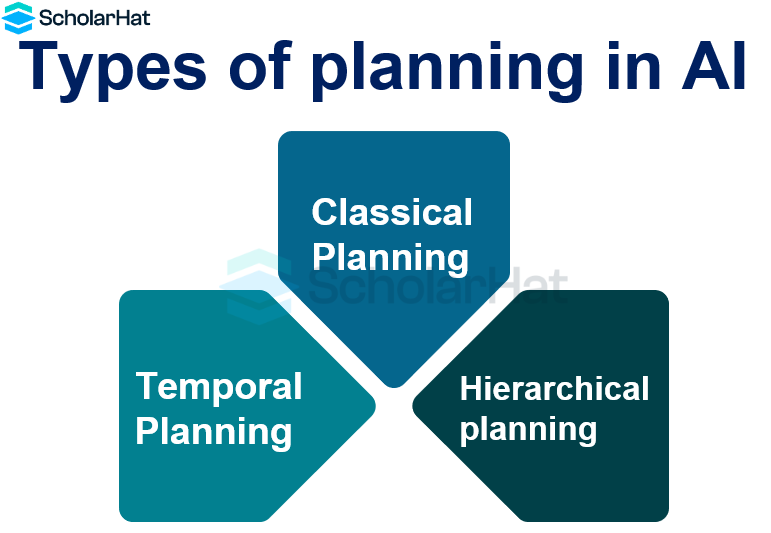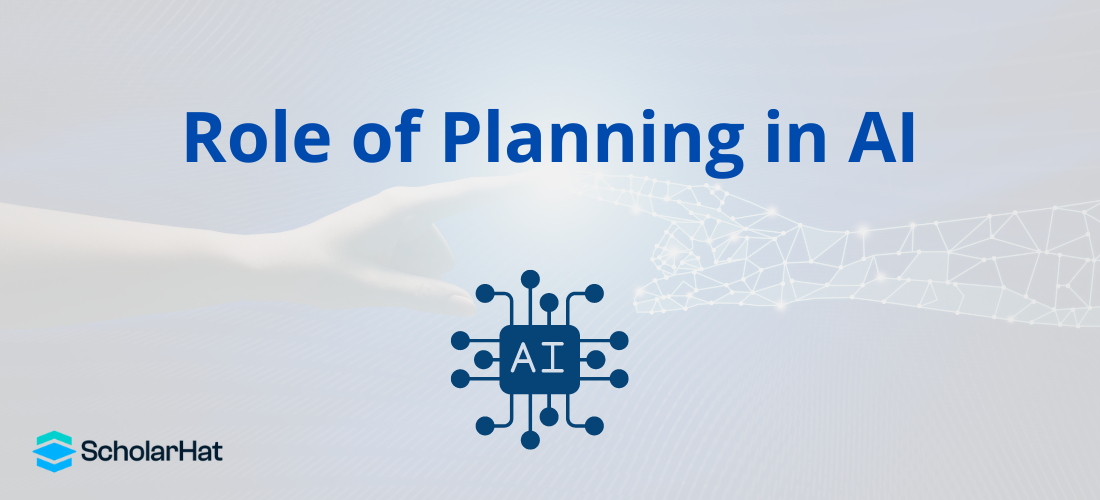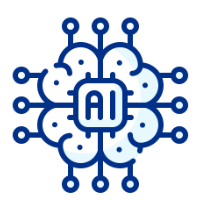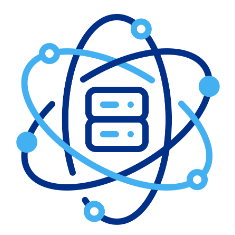18
AprWhat is Environment in AI - Types of Environment in AI ( Full Guide )
Introduction
Artificial intelligence (AI) has fundamentally changed several industries and has become a part of daily life. Planning, which entails putting together a series of actions to accomplish a particular objective, is one of the fundamental elements of AI. In this Artificial Intelligence tutorial, we will explore planning in AI, involving applying algorithms and approaches to create the best plans possible, which can improve the efficacy and efficiency of AI systems.
What is Planning in AI?
Planning in AI is the process of coming up with a series of actions or procedures to accomplish a particular goal. It entails assessing the existing situation, identifying the intended outcome, and developing a strategy that specifies the steps to take to get there. It is not confined to a particular industry; it may also be used in robots, video games, logistics, as well as healthcare.
Different types of planning in AI

AI planning comes in different types, each suitable for a particular situation. Popular different types of planning in ai include:
- Classical Planning: In this style of planning, a series of actions is created to accomplish a goal in a predetermined setting. It assumes that everything is static and predictable.
- Hierarchical planning: By dividing large problems into smaller ones, hierarchical planning makes planning more effective. A hierarchy of plans must be established, with higher-level plans supervising the execution of lower-level plans.
- Temporal Planning: Planning for the future considers time restrictions and interdependencies between actions. It ensures that the plan is workable within a certain time limit by taking into account the duration of tasks.
Components of planning system in AI
A planning system in AI is made up of many crucial parts that cooperate to produce successful plans. These components of planning system in ai consist of:
- Representation: The component that describes how the planning problem is represented is called representation. The state space, actions, objectives, and limitations must all be defined.
- Search: To locate a series of steps that will get you where you want to go, the search component searches the state space. To locate the best plans, a variety of search techniques, including depth-first search & A* search, can be used.
- Heuristics: Heuristics are used to direct search efforts and gauge the expense or benefit of certain actions. They aid in locating prospective routes and enhancing the effectiveness of the planning process.
Benefits of AI Planning
Numerous advantages of AI planning contribute to the efficacy and efficiency of artificial intelligence systems. Some key benefits include:
- Resource Allocation: With the help of AI planning, resources can be distributed in the best way possible, ensuring that they are used effectively to accomplish the desired objectives.
- Better Decision-Making: AI planning aids in making knowledgeable judgments by taking a variety of aspects and restrictions into account. It helps AI systems to weigh several possibilities and decide on the best course of action.
- Automation of Complex Tasks: AI planning automates complicated tasks that would otherwise need a lot of human work. It makes it possible for AI systems to manage complex procedures and optimize them for better results.
Applications of AI Planning
AI planning is used in many different fields, demonstrating its adaptability and efficiency. A few significant applications are:
- Robotics: To enable autonomous robots to properly navigate their surroundings, carry out activities, and achieve goals, planning is crucial.
- Gaming: AI planning is essential to the gaming industry because it enables game characters to make thoughtful choices and design difficult and interesting gameplay scenarios.
- Logistics: To optimize routes, timetables, and resource allocation and achieve effective supply chain management, AI planning is widely utilized in logistics.
- Healthcare: AI planning is used in the industry to better the quality and effectiveness of healthcare services by scheduling patients, allocating resources, and planning treatments.
Challenges in AI Planning
While AI planning has many advantages, many issues need to be resolved. Typical challenges include:
- Complexity: Due to the wide state space, multiple possible actions, and interdependencies between them, planning in complicated domains can be difficult.
- Uncertainty: One of the biggest challenges in AI planning is overcoming uncertainty. Actions' results might not always be anticipated, thus the planning system needs to be able to deal with such ambiguous situations.
- Scalability: Scalability becomes a significant barrier as the complexity and scale of planning problems rise. Large-scale issues must be effectively handled via planning systems.
Strategies for Mastering AI Planning
Adopting strategies that improve planning abilities is crucial if you want to master AI planning. Here are some strategies to think about:
- Domain Knowledge: Learn everything there is to know about the planning domain. Better strategies can be made if you are aware of the complexities and limitations of the domain.
- Algorithm Selection: It is essential to choose the right planning algorithm for the particular issue at hand. Choosing the best algorithm can have a big impact on the planning process because different algorithms have different strengths and disadvantages.
- Improvement through iteration: Planning is an iterative process, and improvement is essential. Analyze the effectiveness of plans, pinpoint areas that need improvement, and adjust the planning system as necessary.
Tools and Techniques for AI Planning
Various tools and strategies that support planning can be used to facilitate AI planning. Techniques and tools that are commonly used include:
- Automated planners: Programmes that generate plans automatically include STRIPS and PDDL, which offer a framework for specifying planning problems.
- Constraint Programming: Using the strong technique of constraint programming, complicated planning issues with a variety of constraints can be modeled and solved.
- Machine Learning: Reinforcement learning is a machine learning technique that can be used to enhance planning by learning from previous experiences and refining plans in response to feedback.
Best Practices of AI Planning
Several important aspects are incorporated into best practices for AI planning:
- Formulation of the issue clearly: Clearly state your goals, restrictions, and desired results.
- Optimal representation: Construct an appropriate representation of the planning domain.
- Algorithm selection: Choose planning algorithms that strike a compromise between complexity and optimality.
- Iterative improvement: Keep the planning process under constant review and improvement.
- Management of uncertainty: Include methods, such as probabilistic modeling, to deal with uncertainty.
- Utilizing human expertise: Ask for and use feedback from others to make sure your aims are in line with theirs.
- Benchmarking and evaluation: Continually assess performance and evaluate against pertinent indicators.
- Collaboration: Encourage cooperative planning by incorporating pertinent parties.
- Scalability: Design planning systems with scalability in mind to effectively tackle big problems.
- Real-time responsiveness: Create systems that can instantly adjust and replan in response to shifting circumstances.
- Ethical considerations: Address AI ethical issues, promote justice, and ensure accountability in the planning procedures..
- Documentation: Keep thorough records of the planning process for future reference.
Resources for further learning and practice
Online tutorials and courses: Explore Additional Learning and Practice Resources with us at https://www.scholarhat.com/training/artificial-intelligence-certification-training. There are numerous online tutorials and courses available that specifically focus on Artificial Intelligence.
Summary
Artificial intelligence planning is an essential part of AI that improves the effectiveness and efficiency of AI systems. Organizations may optimize their planning processes and produce better results by comprehending the different types of planning in ai, the components of planning system in ai, and techniques for mastering AI planning. Planning with AI has the potential to revolutionize many industries and open the door to a more intelligent future with the correct tools, approaches, and training.







